This post builds on the research article “The Modernity of Manual Reproduction: Soviet Propaganda and the Creative Life of Ideology,” which was published in the August 2011 issue of the Society’s peer-reviewed journal, Cultural Anthropology.
Interview With the Author
Ryan James: Your paper illustrates how, contrary to common assumptions, propaganda and ideology in the Soviet state were not complete, unidirectional processes for state institutions to deliver officially sanctioned information to the population, and that oversimplified usages of the terms "propaganda" and "ideology" are misinformed and often politically loaded. Yet you do not advocate replacing the terms "propaganda" and "ideology" with newer wording that is purported to be more "neutral", and instead use these terms in conscientious, nuanced ways to illustrate how the spread of state messages was subject to the creativity of "cultural workers" and the local contexts in which they worked. In introducing this approach, you provide some examples of how "in anthropology, ideology coexists somewhat awkwardly with such alternatives as belief, discourse, and even culture". Could you elaborate further on how these anthropological keywords may be relevant (or not) to your usage of the concepts of "propaganda" and "ideology"?
Sonja Luehrmann: What I meant by the reference to other anthropological keywords is that although political ideology per se has seldom been a topic of detailed ethnographic analysis, there seems to be a tendency in some corners of anthropology to use “ideology” very loosely as meaning “what people think they (or others) are up to when they are doing x.” Combinations like “linguistic ideology,” “semiotic ideology,” “ideologies of performance” etc. suggest an understanding of ideology that is somewhat like the more idealist understandings of culture: some system of shared ideas (or “beliefs,” to include one of the other keywords I mentioned) whose institutional location, social anchoring, and methods of transmission are left open. Such a use of “ideology” shares with many anthropological uses of “culture” the blurring of the boundaries between the unspoken and taken-for-granted and the explicit and contested that Maurice Bloch has criticized.
I always had a feeling that part of the impulse behind using ideology in such a loose way was the claim that ideologies in the more political-science sense of elaborated systems of ideas promoted by a particular institution somehow don’t matter any more in the post-Cold War world, so that power today is only located in more diffuse, unquestioned assumptions or in “discourses” that transcend institutions.
I am not saying that power cannot be studied in that way, but as someone who has worked on organizations devoted to promoting particular ideas that are often very far from cultural common sense, I am intrigued by the continuing power of institutions to force people to somehow integrate convictions into their lives that may even run counter to much that they take for granted and hold dear.
For example, as part of my fieldwork in Russia I worked with evangelical Christians, some of whom would talk with affection of a deceased spouse, parent, or sibling, only to look me straight in the eye and conclude without a blink: “But he died and I know he is in hell, because he was not a believer.” These people continue to hold everyday assumptions about the value of kin connections and love and support between spouses, but perhaps the very effort to deny all this in the name of the “faith” they have accepted binds them more tightly to the institution - the church in this case - that is asking them for this denial. But it would be very hard for an institution to survive only on being countercultural, without itself establishing some kind of common sense. And this is where mediators like the people I call “cultural workers” come in - in the late Soviet Union, their challenge was precisely to keep alive the momentum of the incongruous within a political system that was very much based on stability and predictability.
RJ: You describe your participants as "cultural workers." Did many of them explicitly identify themselves as such? If not, how else did they identify? Do you think that the experience of taking part in an anthropological study of ideology affected their own understanding of the work they had done?
SL: First of all, I should explain that research for this article was part of a larger study on Soviet atheism and post-Soviet religious revival in the Republic of Marii El (Russia) - the visual materials discussed here were those that did not make it into that book, because they had little direct connection to atheism or religion.
So people came to be “participants” in my study in a variety of ways: some of the characters whom I call “cultural workers” are people I have never met, but whose names are recorded in archival documents or Soviet-era newspaper articles.Others are people I interviewed in 2005/06 in their present role of religious activists, but who remembered working in Soviet cultural institutions.
The two long-time lecturers of the Knowledge Society whom I quote in the article are people I tracked down specifically to ask them about their involvement in atheist propaganda.
Finally, there were museum custodians and archivists who were able to speak about the contexts in which the circulating albums were created from their own experience, but who probably did not think of themselves as “participants” in my research, but as professionals aiding a foreign scholar in accessing and understanding materials.
But I suppose part of what the question is getting at is if I don’t also conflate “culture” and “ideology” by calling the people who transmit ideology “cultural workers.” There is indeed a bit of a confusion of terminology here, due to the fact that I draw on local usage to designate this group of people.
In Soviet and post-Soviet Russia, “cultural worker” (kul’turnyi rabotnik or rabotnik kul’tury) is the term with which employees of houses of culture, librarians, teachers, actors, entertainers etc. can collectively describe themselves. Depending on their precise current or former profession, some of my interviewees might also have used terms like lecturer, propagandist, or metodist (a Russian term for a specialist in the “methods” of public pedagogy needed to plan outreach events for cultural institutions). This particular meaning of “culture” comes out of Soviet efforts to build a “modern” or “civilized” society, and includes such things as theater and libraries, but also hygiene, functional furniture, paved roads, and sobriety. So it shares with anthropological understandings of culture the attention to matters of the everyday, but kul’tura was certainly not taken for granted, but something that was always being built and struggled for. It was the antithesis of “backwardness,” and thus very closely linked to Marxist-Leninist teachings about historical development.
So in terms of the education they would have received in the Soviet era, all these people had been well aware that they were expected to spread a particular ideology, and did not need my questions to remind them of that. Those who still worked for secular cultural institutions in 2005 seemed glad to encounter someone who acknowledged and valued the skills involved in their work, which in post-Soviet Russia means long hours in cold buildings for almost no pay - it’s not so much the ideology that is condemned, but the institutional framework has been even more devalued than it was in Soviet times.
Those who had converted to a religious faith were sometimes embarrassed to be asked about their past service to Marxist ideology, but often gave very thoughtful answers to my questions about the relevance of that experience to their current work. So perhaps I caused some people to think differently about the value of their work or the relationship between different periods in their lives.
But I don’t think the people I interviewed experienced themselves as participating in a coherent “project” - in fact, many of them were quite frustrated by the eclectic nature of my research interests, and seemed to find it hard to make out the logic behind the range of different religious and non-religious groups I was interested in.
RJ: Your paper provides some examples of how the techniques and complications of atheist Soviet propagandizing were often similar to those of the preaching and proselytizing of religious groups. Did your participants say much about this (ironic) linkage? Also, you mention that your next publication will address the complex relationship between "Soviet communism and post-Soviet religion". Could you elaborate on this relationship, perhaps through a brief preview of your forthcoming work?
SL: My point of entry into Soviet-era cultural work was through post-Soviet religion. I set out to do an ethnographic study of a variety of religious groups present in this small autonomous republic: Orthodox and Protestant Christians, Sunni Muslims, and Mari traditionalist “Pagans.” What I found in all groups was that people in leading positions - both laypeople and clergy - were often of the generation that had come of age in the 1960s and 70s Soviet Union and had a background in Soviet cultural work.The irony (of which many of my interviewees were well aware) was that this was the professional group that was most expected to profess and also promote atheism.
So I became interested in the skills and dispositions people acquired during their work in the service of building a secular society, and the impact of these skills and dispositions on post-Soviet religious life. What I focused on were didactic skills of adapting universal truths to specific audiences and making them “livable” in some way - hence the title of my forthcoming book, Secularism Soviet Style: Teaching Atheism and Religion in a Volga Republic.
I do not engage with the term ideology much in that book, although it is very much about practices of mediation and transmission. I think I avoided the term because I did not want to give the impression of equating “Communist ideology” and “religion” as two kinds of faith, as has often been done.
This article is an attempt to approach ideology from a different angle, using materials that relate more to issues of socialist visual aesthetics than to atheism and religion. But I still find it useful to draw on approaches and examples from the anthropology of religion, because it is one of the areas where anthropologists have thought very hard about how ideas take on lived form. Perhaps if ideology is understood as something incongruous that manages to establish a foothold in everyday life with the help of specific institutions, one could start to talk about the commonalities and shared challenges of political movements and proselytizing religions without equating them.
Multimedia
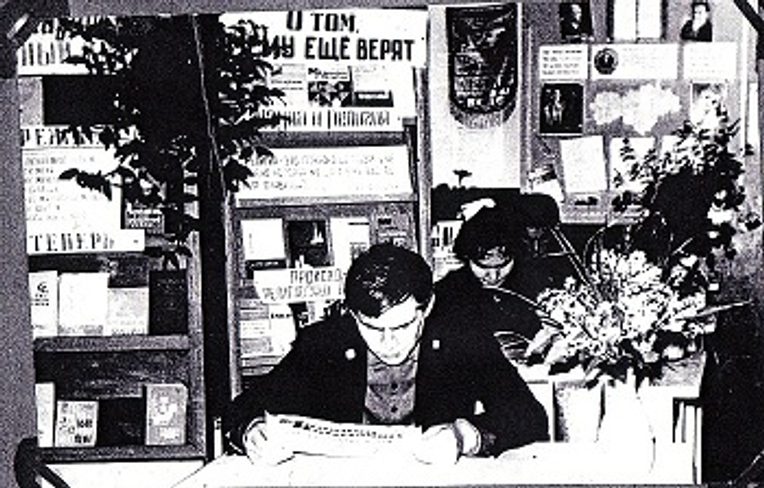
Figure 1 - Staryi Tor”ial rural library, Mari ASSR, ca. 1972. Book displays in this reading room are framed by handwritten captions, quotes, and collages. The display behind the young man reading the newspaper is titled “What people still believe” and features literature on religion and atheism. In the collage to the right, pictures of historical figures and pages of text surround a map of the Mari republic. Album “Relay of cultural institutions for the Fiftieth Anniversary of the USSR”. Courtesy of Novyi Tor”ial district museum, Republic of Marii El (NTDM).
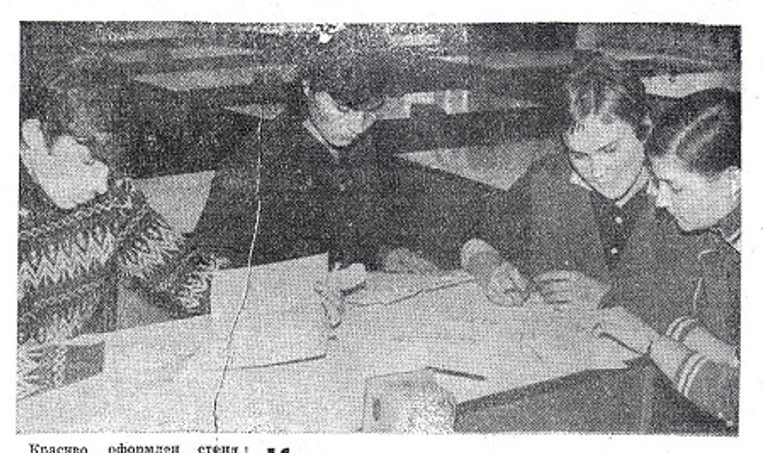
Figure 2 - Tenth-grade students from Kuznetsovo Middle School (Mari ASSR) creating a wall newspaper for their school’s circle of young atheists. Put’ k kommunizmu, November 23, 1972, p. 3.
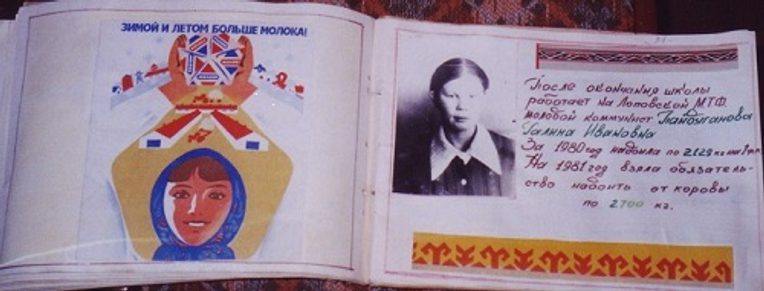
Figure 3 - “In winter and summer more milk!” Page contributed by the Komsomol cell of the Memory of Lenin collective farm to the album “Relay of shock Komsomol deeds,” 1980–1981. Courtesy of NTDM.
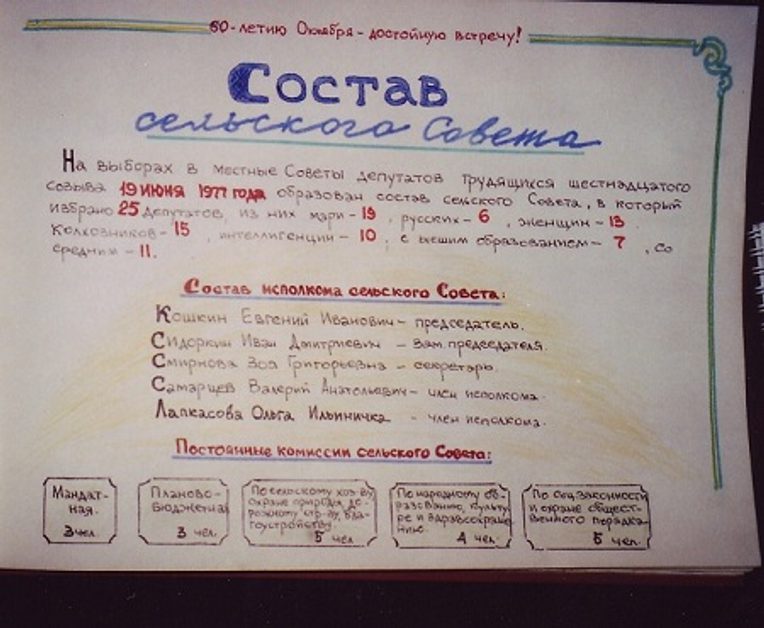
Figure 4 - “Composition of the rural council.” Page contributed by the Bol’shoi Lumar’ rural council to the album “Relay of work feats,” 1977. Courtesy of NTDM.
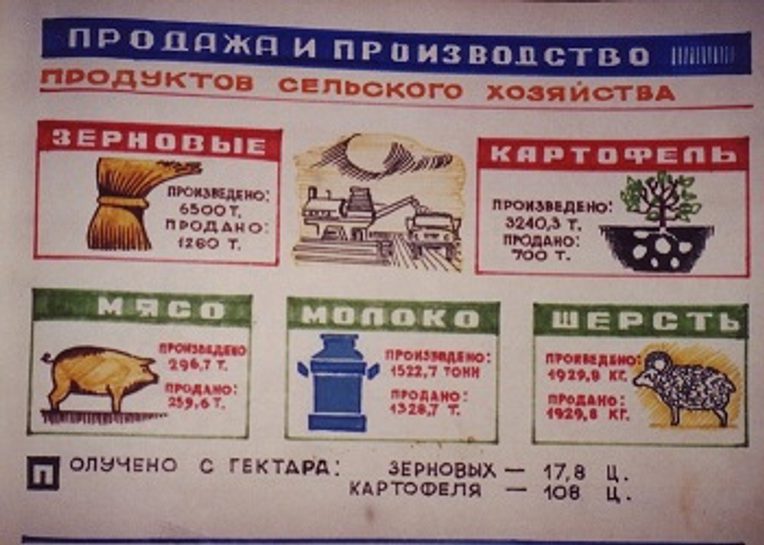
Figure 5 - “Sale and production of agricultural products.” Page contributed by the Shuibeliak rural council to the album “Relay of work feats,” 1977. Courtesy of NTDM.
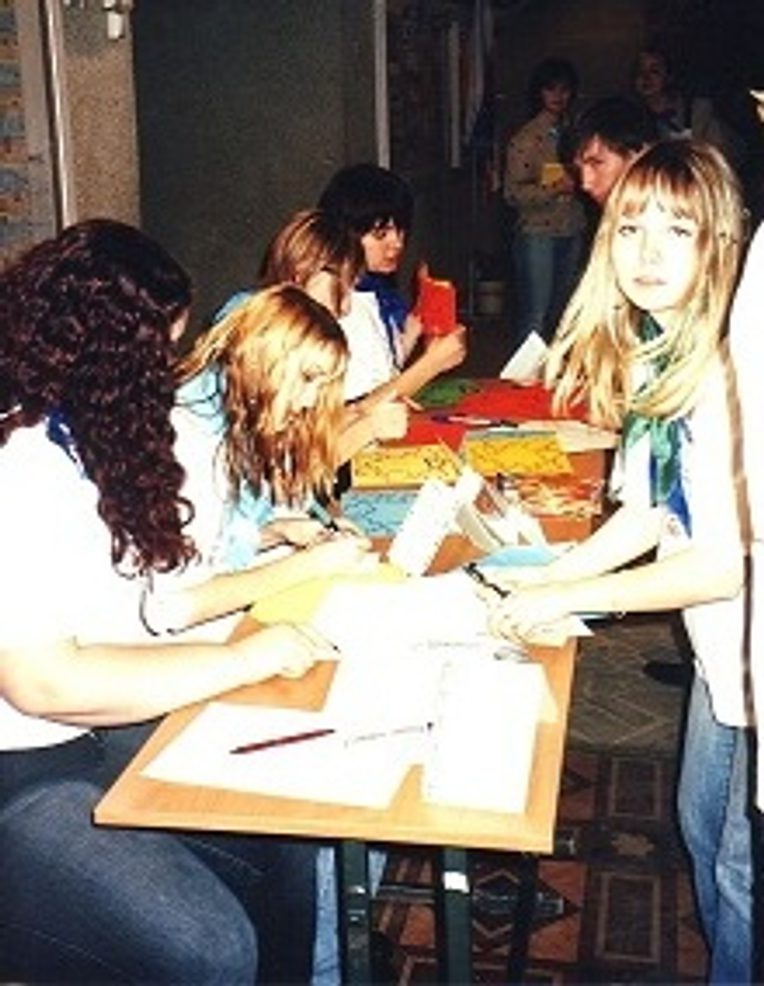
Figure 6 - Signing in participants at the Festival of Tolerance, Ioshkar-Ola, November 2005. Photograph by Sonja Luehrmann.
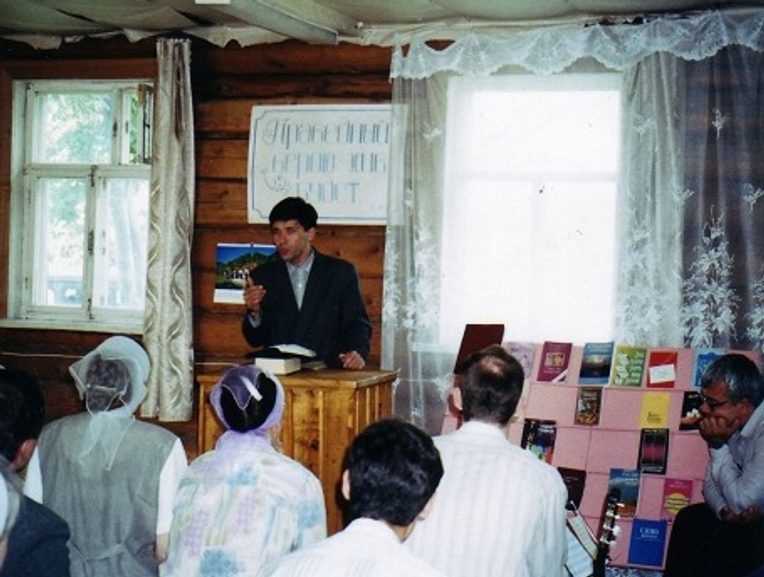
Figure 7 - Traveling Baptist preacher in Ioshkar-Ola, June 2005. Photograph by Sonja Luehrmann.
Questions for Classroom Discussion
1. How does the author characterize the relationship between the state and local-level agents in the late Soviet period?
2. How did you understand the concepts of “propaganda” and “ideology” before reading this article? Have these understandings changed after reading it?
3. What does this article say about the relationship between atheism and organized religion?
4. What specific forms of labour do "cultural workers" do?
5. Can you think of individuals who could be understood as “cultural workers” in your own cultural context? What messages are they transmitting and in whose interest?
Suggested Reading
www.soviethistory.org is a website created by a team of historians with a rich collection of audiovisual sources, in addition to helpful essays and translated primary sources documenting how Soviet socialism was lived. Registration is required for full access, but it is free.